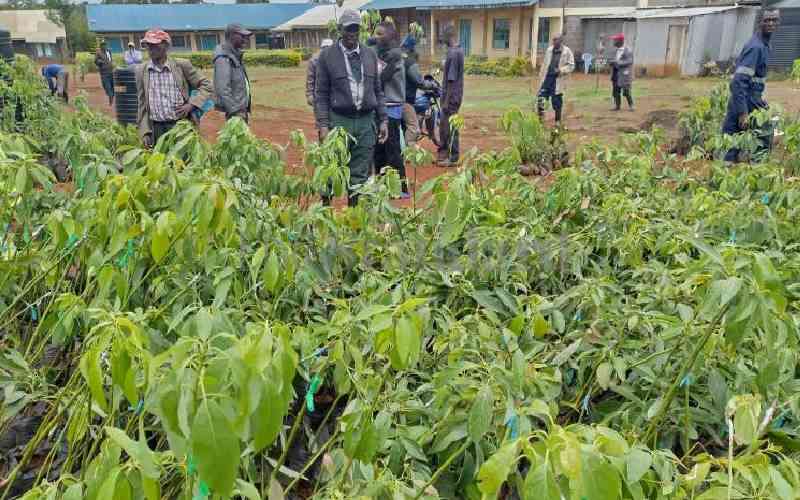Kenya: The country is importing 2.5 million tonnes of cereals, including 1.1 million tonnes of wheat, 900,000 tonnes of maize and 445,000 tonnes of rice in the current financial year, according to the United Nations Food and Agriculture Organisation (FAO).
The organisation's Global Information Early Warning System says cereal production last year declined by 10 per cent, the highest drop in the last five years.
On Monday, Devolution and Planning Cabinet Secretary Anne Waiguru said some 1.6 million Kenyans are facing hunger mainly in marginal agricultural areas and a few other pockets in the country.
Much of the imports, the report says, however, are informal from Uganda and Tanzania which are enjoying a good food surplus. Kenya's dependence on its neighbours to feed its people has been on the increase as population outstrips production especially for maize. The Food Security and Nutrition Working Group says maize imports from Uganda and Tanzania last year were 21 and 16 per cent higher than in 2013, respectively.
Ironically, as 1.6 million Kenyans go hungry, people in almost all major towns are enjoying lower maize prices. Since December the Famine Early Warning System Network (FEWS NET) says maize price has gone down by eight per cent in Nairobi.
"Prices in Nairobi, Mombasa, and Eldoret are up to 20 per cent below the five-year average, though there has been a small increase of price in Kisumu," says their Food Security Outlook for January to June. This is attributed to harvests from the field and increased imports from neighbouring states.
Petroleum prices
According to FEWS NET the falling petroleum prices may also help keep the price of food prices stable because of lower transport and processing costs. Fuel prices are expected to continue decreasing through April, driven by the expected continued fall in international crude oil prices.
Declining fuel prices, the forecast says, are expected to drive transportation and energy costs down, eventually further reducing inflation rate.
Although the Ministry of Agriculture indicates that the short rains crop may be 40 to 50 per cent below average in volume it puts up a brave face saying there in no need to panic.
"With the remaining long rains harvest, the expected short rains harvest, stocks, and maize imports from Tanzania and Uganda, the Ministry of Agriculture estimates that maize stocks should last through at least June 2015," says FEWS NET.
 The Standard Group Plc is a
multi-media organization with investments in media platforms spanning newspaper
print operations, television, radio broadcasting, digital and online services. The
Standard Group is recognized as a leading multi-media house in Kenya with a key
influence in matters of national and international interest.
The Standard Group Plc is a
multi-media organization with investments in media platforms spanning newspaper
print operations, television, radio broadcasting, digital and online services. The
Standard Group is recognized as a leading multi-media house in Kenya with a key
influence in matters of national and international interest.
 The Standard Group Plc is a
multi-media organization with investments in media platforms spanning newspaper
print operations, television, radio broadcasting, digital and online services. The
Standard Group is recognized as a leading multi-media house in Kenya with a key
influence in matters of national and international interest.
The Standard Group Plc is a
multi-media organization with investments in media platforms spanning newspaper
print operations, television, radio broadcasting, digital and online services. The
Standard Group is recognized as a leading multi-media house in Kenya with a key
influence in matters of national and international interest.








